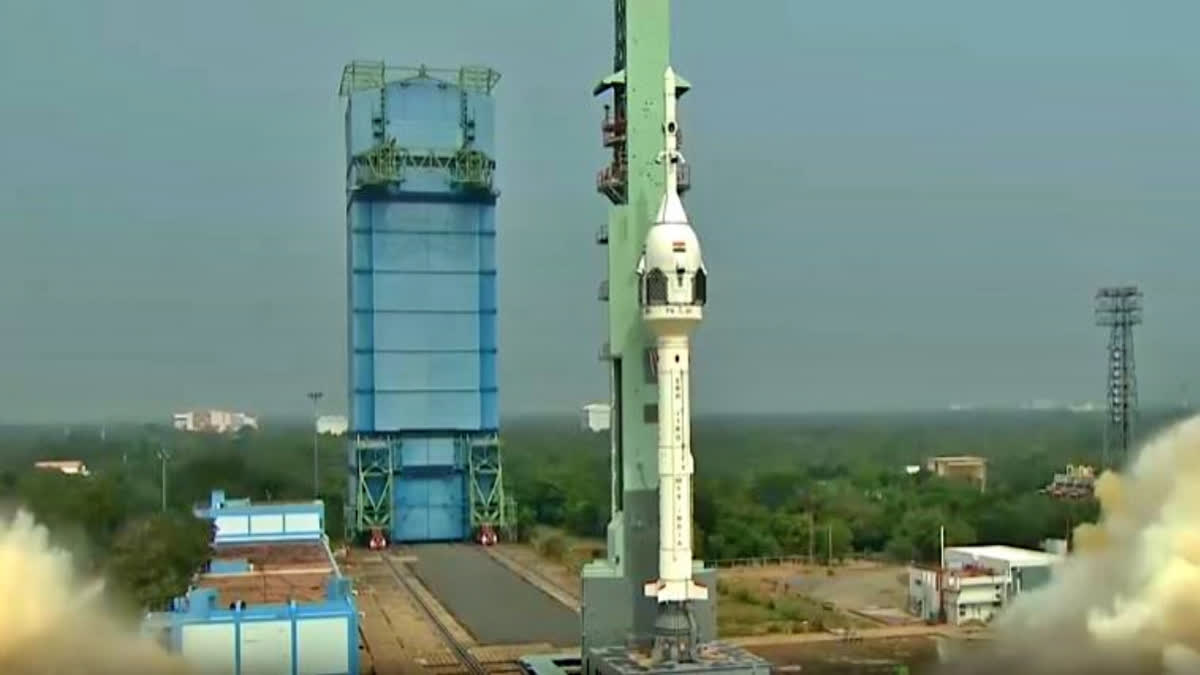Bengaluru: The Indian Space Research Organisation (ISRO) on Sunday shared the onboard video of the Gaganyaan TV-D1 test vehicle, marking a significant achievement for the Indian space agency.
This successful launch has propelled India into the exclusive league of countries capable of independently launching crewed spacecraft, namely the Gaganyaan.
Despite initial challenges and delays, ISRO triumphantly launched the test vehicle, which carried essential payloads for India's ambitious Gaganyaan program. The crew escape system effectively detached the crew module from the launch vehicle, followed by a safe descent using parachutes, culminating in a successful splashdown in the Bay of Bengal. The Indian Navy executed a seamless recovery of the crew module.
-
TV D1 Onboard video https://t.co/3hedjrLgiA https://t.co/QRhVQ0chB7
— ISRO (@isro) October 22, 2023 " class="align-text-top noRightClick twitterSection" data="
">TV D1 Onboard video https://t.co/3hedjrLgiA https://t.co/QRhVQ0chB7
— ISRO (@isro) October 22, 2023TV D1 Onboard video https://t.co/3hedjrLgiA https://t.co/QRhVQ0chB7
— ISRO (@isro) October 22, 2023
ISRO Chief Somanath informed that the purpose of this mission was to demonstrate the crew escape system. “I am very happy to announce the successful accomplishment of the TV-D1 mission. The purpose of this mission was to demonstrate the crew escape system for the Gaganyaan programme through a test vehicle demonstration in which the vehicle went up to a Mach number, which is slightly above the speed of sound, and initiated an abort condition for the crew escape system to function,” he said.
The mission encompassed several objectives, all of which were met. They included: Demonstrating and evaluating the sub-systems of the Test Vehicle during flight; testing and evaluating the Crew Escape System, including various separation systems; and demonstrating the characteristics of the Crew Module and its deceleration systems at higher altitudes, as well as showcasing its successful recovery.
The Test Vehicle is a single-stage liquid rocket developed for this abort mission. The payloads consist of the Crew Module (CM) and Crew Escape Systems (CES) with their fast-acting solid motors, along with CM fairing (CMF) and Interface Adapters. This flight simulated the abort condition during the ascent trajectory, corresponding to a Mach number of 1.2 encountered in the Gaganyaan mission. This mission represents a significant milestone in India’s effort to demonstrate that it is possible to send humans into space.
The Gaganyaan project envisages a demonstration of human spaceflight capability by launching a crew of three members into an orbit of 400 km for a 3-day mission and bringing them safely back to earth by landing in Indian waters. This programme will make India the fourth nation to launch a manned spaceflight mission after the US, Russia, and China. (With agency inputs)
Also read: Gaganyaan Test Vehicle launch major step towards ISRO's future plans: Space experts



